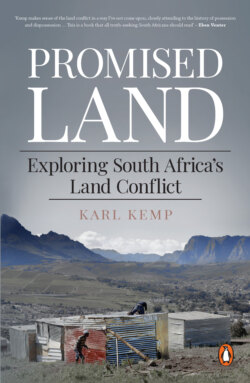Promised Land

Реклама. ООО «ЛитРес», ИНН: 7719571260.
Оглавление
Karl Kemp. Promised Land
Contents
Preface. Anysberg
1. The Great Cattle-Killing and Other Stories
2 ‘Return the Land’
3. A Winelands Murder
4. Trench Warfare
5. The Urban Farmers
6. Hand of God
7. Dwaalarbeiders
8 ‘Addicted to Black Labour’
9. The Sound of Hammers
10. A Plurality of Revolutions
11. The Knife Edge
12. The Contours of a Crisis
13. Burning the Mango Grove
14. The Stadts of Zeerust
15. The Land-Grab Blueprint
16. The Deep South
17. The Making of a Township
18. Inside Gabon
19. Foreigners on the Banks of the Jukskei
20. The Place of Weeping
Afterword
Acknowledgements
Sources
Abbreviations
Glossary
Index
Отрывок из книги
Vir my ma Regina,
my linkerhand wyl ek skryf.
.....
The majority judgment was less than a third of the length of Cachalia’s. The authors, Judges Pillay and Dambuza, conceded that some of the evidence led by the claimants was ‘capable of criticism’, but responded that the evidence of the landowners was similarly tainted, and strongly emphasised the fact that the legal process in the Land Claims Court was special and unique and should be approached ‘holistically’ and in line with the purpose of the Act – namely, to offer historical justice and redress wherever possible.
Cachalia’s judgment formed the basis for a last-ditch appeal to the Constitutional Court. In this final stretch, media interest again flared up considerably. The experts had testified in person at the Land Claims Court, but both the SCA and the ConCourt dealt largely with the record only. There was far less drama, but the fact that the ConCourt was the absolute last stop on the journey was cause for coverage. What was more, the celebrated and storied jurist Edwin Cameron wrote the judgment, which was unanimously agreed upon by the other nine justices. The ConCourt charted a completely novel course, emphasising how unique and special these types of court cases are, and handed down a judgment ruling that both parties were entitled to the land in some way or another. With that order in hand, it was up to the government to go back to square one and hammer out some kind of deal between the settlers and the Xhosa that validated Cameron’s reasoning. In the justices’ own words, the claimant community was entitled to a ‘measure of restitution’ that ‘did not necessarily include the entirety of the land-owner’s farms’. What shape this deal would eventually take was unclear. Land restitution is rarely so cut and dried, and the specifics would likely take a number of years, much paperwork and a lot of taxpayer money to reach an actual conclusion.
.....